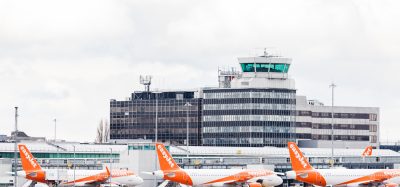Air traffic resumed upward trajectory in February 2022
- Like
- Digg
- Del
- Tumblr
- VKontakte
- Buffer
- Love This
- Odnoklassniki
- Meneame
- Blogger
- Amazon
- Yahoo Mail
- Gmail
- AOL
- Newsvine
- HackerNews
- Evernote
- MySpace
- Mail.ru
- Viadeo
- Line
- Comments
- Yummly
- SMS
- Viber
- Telegram
- Subscribe
- Skype
- Facebook Messenger
- Kakao
- LiveJournal
- Yammer
- Edgar
- Fintel
- Mix
- Instapaper
- Copy Link
Posted: 12 April 2022 | International Airport Review | No comments yet
ACI EUROPE has released its latest air traffic report, which shows that after two months of stalled recovery, passenger traffic has resumed an upward trajectory in February 2022.


European airport trade body, ACI EUROPE, has released its air traffic report for February 2022.
The report shows that after two months during which the recovery stalled due to the COVID-19 Omicron wave, passenger traffic resumed an upward trajectory in February 2022. Accordingly, compared to pre-pandemic (2019) levels, passenger volumes across the European airport network stood at -39 per cent during the month, up from -45.7 per cent in January 2022.
Olivier Jankovec, Director General of ACI EUROPE said: “Improvements to passenger traffic in February reflected the fact that States started to ease restrictions as the Omicron wave subsided, both at local level and those relating to travel. Since then, most restrictions to intra-European travel have been lifted and more external markets are opening up – meaning the traffic recovery has gathered steam.
“The outlook for the Easter holidays and into the summer months is strong, but staff shortages, high traffic peaks and ATM capacity issues are starting to put strain on operations and to impact quality. Above all, there is no escaping the fact that the war in Ukraine has devastated the country’s airports and that it also comes with significant downside risks for European air traffic.”
All data reported below are against pre-pandemic (2019) corresponding periods.
EU+ market improving faster than the rest of Europe
Airports in the EU+ market saw passenger traffic recovering to -42.4 per cent during February, up from –51.1 per cent in the previous month. The performance gap between national markets remained significant, mostly due to the lack of alignment on both the extent and timing of the easing of Omicron-related restrictions, but also increasing competitive dynamics.
Airports in Portugal (-23.7 per cent), Spain (-26.8 per cent), Luxembourg (-27.7 per cent), Croatia (-28.9 per cent) and Ireland (-33.8 per cent) posted the best performance. Conversely, those in Slovenia (-63.9 per cent), Germany (-59.6 per cent), Sweden (-59 per cent), Finland (-57.5 per cent) and the Czech Republic (-55.4 per cent) registered the largest declines.
In the rest of Europe, passenger volumes were at -20.6 per cent in February, up from -23.8 per cent in January. Airports in Uzbekistan (+52.7 per cent), Albania (+21.9 per cent) and Kosovo (+13 per cent) clearly stood out, while those in Russia (0 per cent) had just completed their full recovery. Airports in Turkey (-27.3 per cent) and Georgia (-29 per cent) posted similar results, while those in Belarus kept being heavily impacted (-59.3 per cent) by EU sanctions.
Majors still underperforming
The Majors (top five European airports) saw passenger traffic at -43 per cent in February, up from -48.5 per cent in January.
Istanbul (-26.6 per cent) remained the busiest European airport, followed by Paris Charles de Gaulle Airport (CDG) (-42.3 per cent), Madrid-Barajas Adolfo Suárez Airport (MAD) (-30.7 per cent), London Heathrow Airport (LHR) (-47.8 per cent) and Amsterdam Airport Schiphol (AMS) (-45.1 per cent).
The permanence of severe travel restrictions on many intercontinental markets, in particular Asia, also weighed on other large hubs: Munich (-61.5 per cent), Helsinki (-60.2 per cent), Frankfurt (-53.4 per cent) and Zurich (-51.8 per cent). Meanwhile, those hubs relying predominantly on the Americas such as Dublin (-33.9 per cent) and Lisbon (-25.4 per cent) benefitted from the restart of the transatlantic market.
Regional and smaller airports outperforming
With passenger traffic at -28.6 per cent in February compared to –38 per cent in January, smaller regional airports posted the best performance amongst the different segments of the airport industry.
More generally, the ability of LCCs to quickly redeploy capacity and the fact that the recovery remains largely driven by leisure and VFR demand saw selected regional and smaller capital airports significantly outperform the European average including: Batumi (+38.1 per cent), Oradea (+12.7 per cent), Ajaccio (-3.5 per cent), Palermo (-7.4 per cent), Antwerp (-10.1 per cent), Lanzarote (-10.6 per cent) Tenerife-South (-13.9 per cent), Charleroi (-14.5 per cent), Montpellier (-14.6 per cent), Bergamo (-15.8 per cent), Zagreb (-17.9 per cent), Krakow (-23.2 per cent), Antalya (-27.0 per cent), Nice (-26.3 per cent) and Budapest (-36.2 per cent).
Freight and movements
Freight traffic across the European airport network also improved significantly in February at +10.6 per cent, up from -8.6 per cent in January. Aircraft movements stood at -32.8 per cent in February compared to -42.1 per cent in the preceding month.
During February, airports welcoming more than 25 million passengers per year (Group 1), airports welcoming between 10 and 25 million passengers (Group 2), airports welcoming between five and 10 million passengers (Group 3) and airports welcoming less than five million passengers per year (Group 4) reported an average decline of passenger traffic compared to 2019 by -42.9 per cent, -38.1 per cent, -29.5 per cent and -28.6 per cent respectively.
Related topics
Air traffic control/management (ATC/ATM), Airport development, Airside operations, Capacity, COVID-19, Passenger experience and seamless travel, Passenger volumes
Related airports
Amsterdam Airport Schiphol (AMS), London Heathrow Airport (LHR), Madrid-Barajas Adolfo Suárez Airport (MAD), Paris Charles de Gaulle Airport (CDG)


















